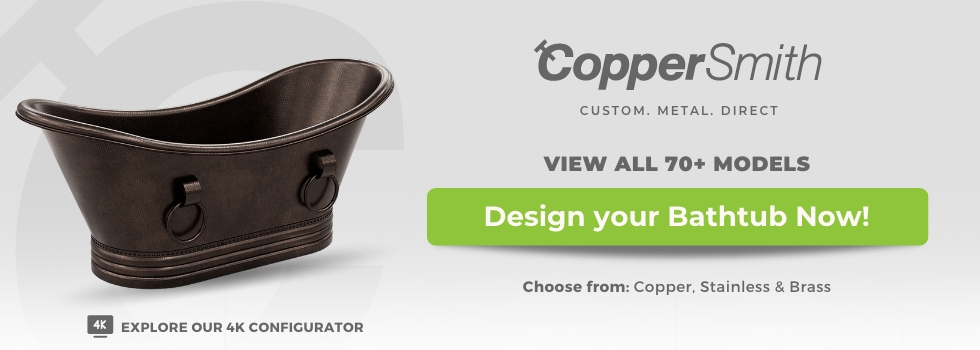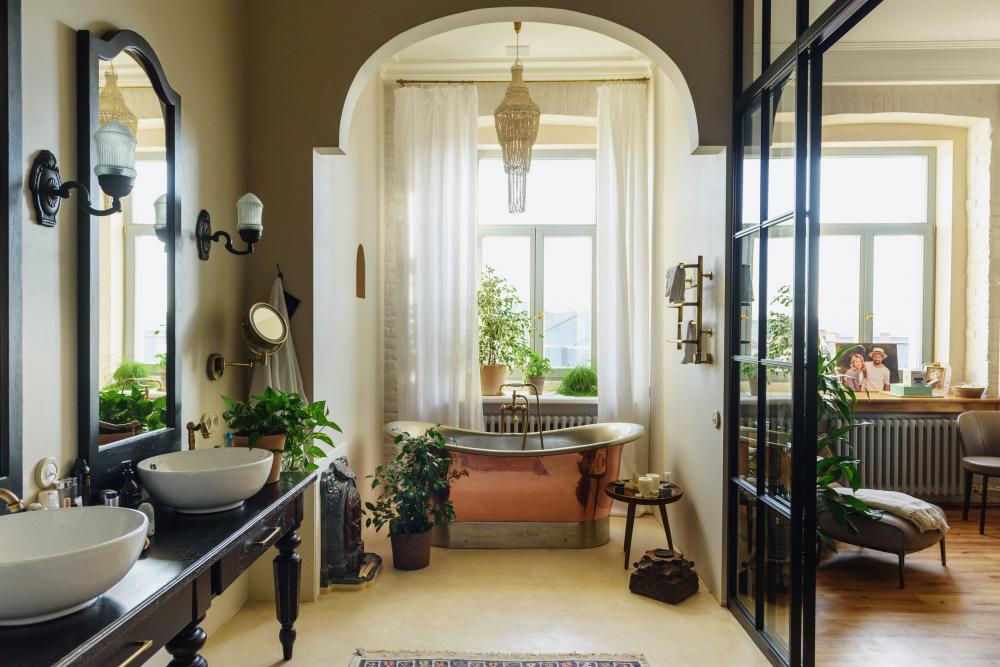Bathtubs today are available in more shapes, sizes, styles, materials, and colors than ever before, which is exciting! However, the huge array of choices can make it a real challenge when it comes to choosing the right one for your bathroom.
While the right bathtub can enhance your space and transform it from drab to fab, the wrong choice can be an expensive faux pas that makes you grit your teeth every time you see it.
Choosing the right bathtub has as much to do with size as it does style and color. Take a look below at some options for materials, sizes, and styles of bathtubs, and check out some tips for choosing the best one.
Common Bathtub Materials
One of the most popular materials for tubs is porcelain, but that’s quickly changing with the rise in popularity of other materials, some of which include:
- Acrylic
- Cast iron
- Copper
- Ceramic
- Fiberglass
- Marble
- Brass
There are also some bathtubs made of combinations of materials, such as porcelain-enameled steel and fiberglass-coated acrylic.
The Benefits of Different Tub Materials
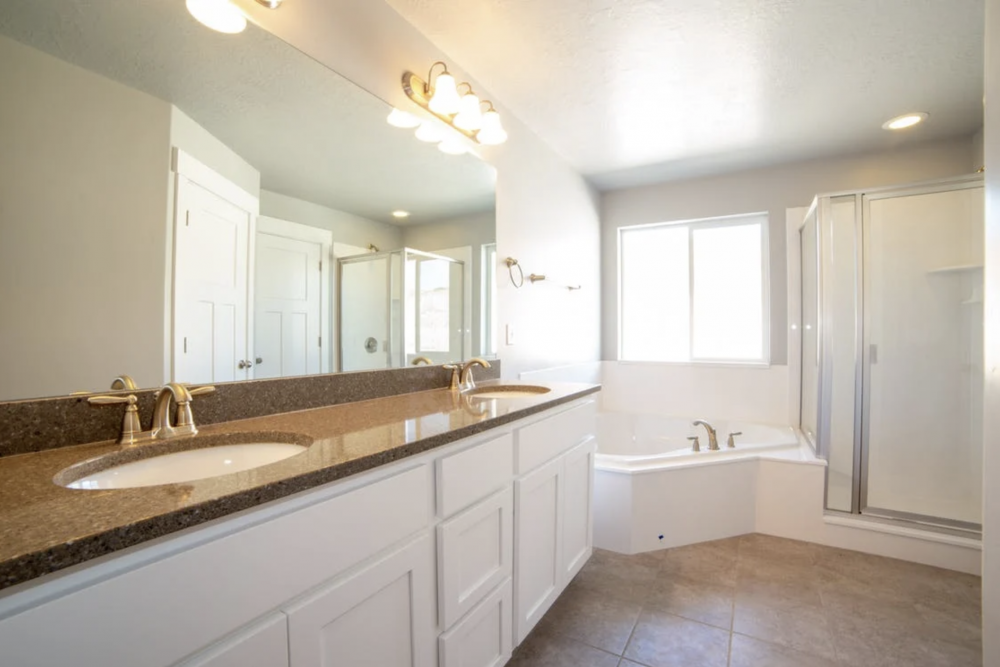
While material selection depends on your needs and the advantages that are most important to you, the material you choose should also reflect your personal style.
Acrylic Bathtubs
Acrylic tubs are lightweight and durable. They are resistant to chipping and cracking. However, the finish can discolor over time and scratch easily.
Cast Iron Bathtubs
Cast iron tubs are classic and timeless, durable, and low-maintenance. However, they are heavy and often need reinforced flooring underneath.
Copper Bathtubs
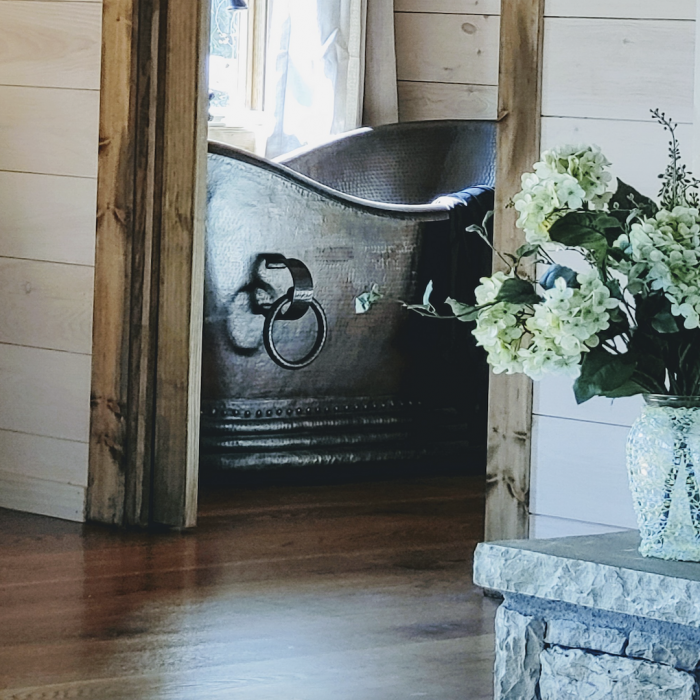
One of the most popular bathtub materials lately is copper. Copper bathtubs are ideal for just about any bathroom, and they have an inimitable feel and look to them. Copper provides many health benefits, from skin moisturizing to soothing muscles and connective tissues.
Copper tubs heat up faster and retain the heat of the bathwater longer than other tubs, and a wide variety of styles, sizes, and colors are available.
Ceramic Tubs
Ceramic tubs will not discolor over time, and they retain the heat of water well. The smooth surface of ceramic makes these tubs easy to clean, too.
Fiberglass Bathtubs
Fiberglass bathtubs are inexpensive, easy to install, and lightweight compared to some other tub types. However, fiberglass is not very durable; these tubs are thin and prone to cracking, scratching, and discoloration.
Marble Tubs
Marble is beautiful and durable, but it’s also prone to staining. Marble tubs are also extremely heavy and come with an equally hefty price tag.
Brass Bathtubs
Brass bathtubs are known for their durability and versatility. They are easy to maintain, add value to any home, and are available in many different sizes, styles, and colors. Brass bathtubs are quickly gaining traction as a popular option for all kinds of bathrooms.
What Does Bathtub Style Have to Do with Size?
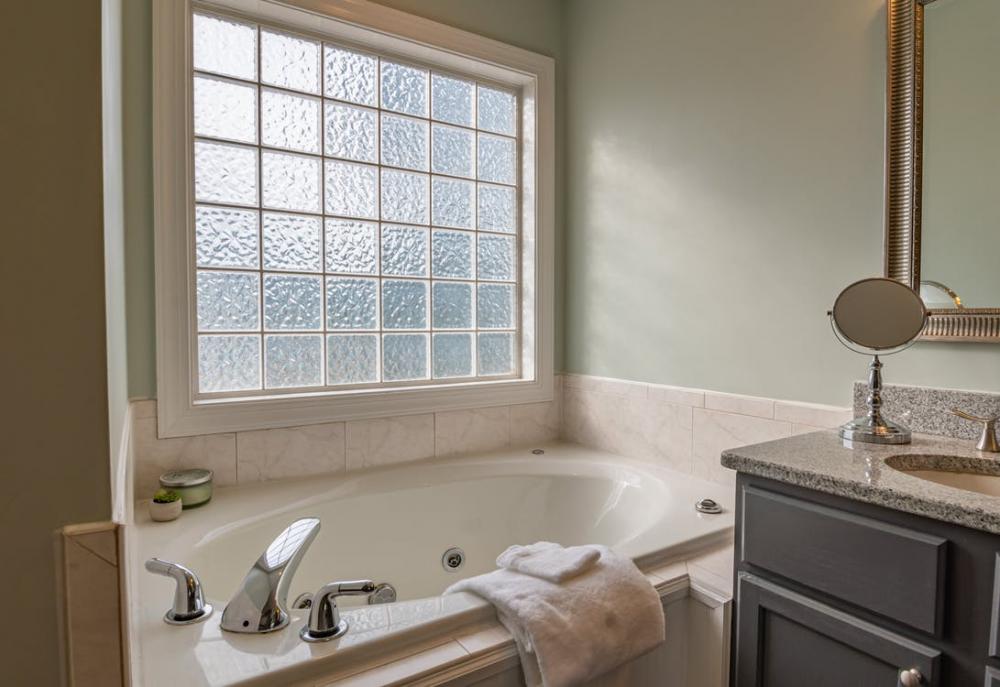
For the most part, there are eight different styles of bathtubs, and it’s important to know the differences because each style has its own standard size. In order to find the right size bathtub, you must find the right style:
- Alcove: A built-in tub with a shower that is surrounded by three walls
- Drop-in: A tub built into a large frame that often has its own rims
- Corner: A triangular tub inserted into the corner of a bathroom
- Soaking: A tub that is deeper and sometimes wider than a standard tub
- Freestanding: A tub that is not built into any walls of the bathroom
- Whirlpool: An acrylic tub with water jets or air streams
- Walk-in: These tubs have a door built into the side for easy entry
- Undermount: Similar to a drop-in, but with a rim that has tile or stone framing
Some bathtub styles require larger spaces than others, and some of them are not available in a wide range of sizes.
Common Bathtub Sizes
As mentioned, different types of bathtubs offer a variety of size options. In order to choose the right size tub for your bathroom, you’ll need to start by knowing some of the standard sizes for each type of bathtub.
Alcove Bathtubs
Alcove bathtubs are the most common style, and they have a standard size of 60” long, 32” wide, and 18” deep. For bathrooms that are very small, more suitably sized alcove tubs are available. These may be anywhere from 48” to 55” long with the same depth and width.
If you’re interested in saving room by placing a tub right up against a couple of walls in the bathroom, a standard alcove tub may be the right size and style for you.
Drop-In Bathtubs
Drop-in bathtubs are larger than alcove tubs and are built into a large frame with a large rim. These tubs usually require a substantial amount of space, so they are usually suitable only for large bathrooms.
These bathtubs are easily customizable in terms of size, but standard drop-in tub sizes are about 60” long, 30” wide, and 16” deep.
Corner Bathtubs
Triangular tubs are space-savers because they fit nicely into corners, leaving more open wall space in bathrooms. They can still take up a lot of floor space, however. Corner bathtubs usually have two sides of equal lengths, with widths anywhere from 48” to 72” and a standard depth of 18” to 20”.
Soaking Tubs
Soaking tubs are freestanding tubs that are popular in modern bathrooms. They can sometimes have seats installed along the sides if the tub is particularly deep. Depending on the shape of the soaking tub, it can have a diameter as small as 40” if it is meant to have the bather sit upright. These tubs are usually at least 27” to 34” deep.
Freestanding Bathtubs
Freestanding bathtubs can be claw-foot tubs, garden tubs, Roman tubs, modern basin tubs, or any other type of tub that is not built into the walls of the bathroom. They might stand on four “feet,” or they might have no feet at all, with the bottom of the tub resting right on the floor.
These types of tubs are usually between 15” and 20” deep. They may be 27” to 32” wide and anywhere from 55” to 72” long. Freestanding tubs are available in an endless variety of styles, shapes, and sizes, making them ideal for just about any bathroom style.
Whirlpool Tubs
Whirlpool bathtubs usually take up about the same amount of space as alcove tubs, and they are usually similar in design and size. This makes the water jets or air jets the only big difference between whirlpool and alcove tubs. Whirlpool tubs average about 18” to 24” deep; they are 32” to 36” wide and about 60” long.
Walk-In Bathtubs
Walk-in tubs are available in a large variety of shapes and sizes because they are designed to be barrier-free bathtubs. They are great for people with restricted movement abilities. These tubs are usually 28” to 36” wide, 48” to 60” long, and 35” to 38” deep.
Undermount Tubs
Undermount bathtubs are not as common as the other types of tubs, and they require a significant amount of space, as well. They are suited only for very large bathrooms and have an average size of 60” long, 30” wide, and 16” deep. However, a significant amount of extra space around the perimeter of the tub is required for the rim.
Finding the Perfect Size Bathtub
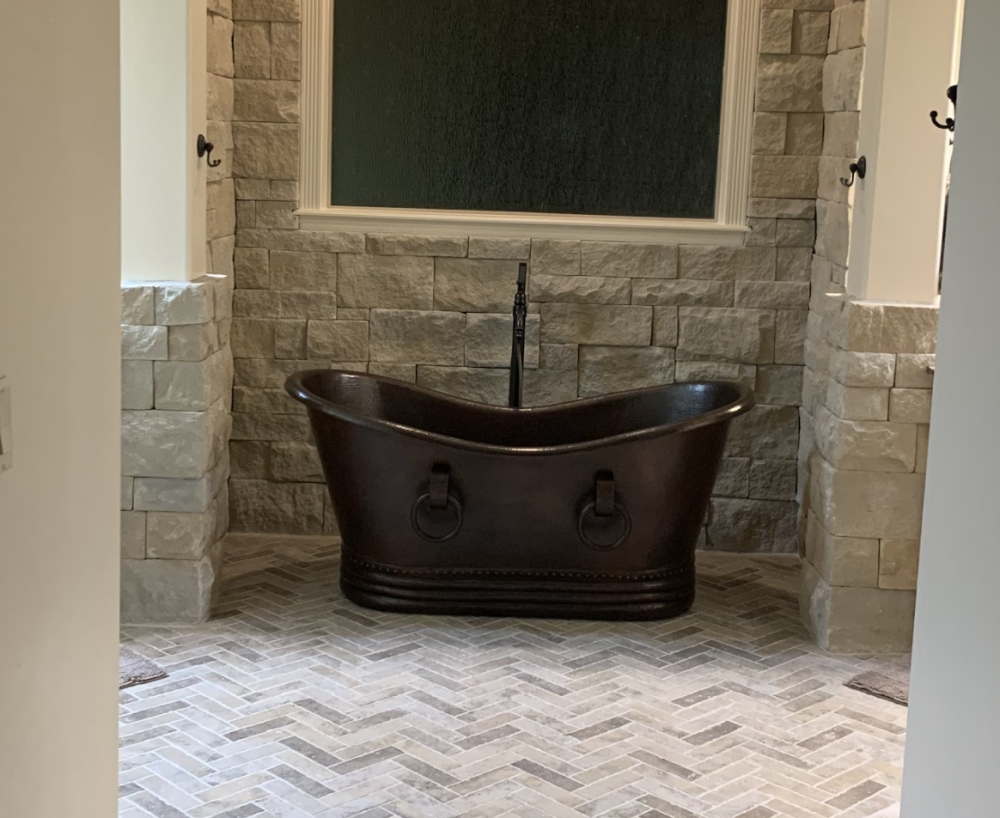
When you're considering different sizes of bathtubs, keep in mind the different available styles and consider the amount of space in your bathroom.
If you have a smaller bathroom, consider a bathtub that won’t take up much floor space, such as a Japanese soaking tub or an alcove tub. If you have a large space and take baths often, you aren’t as limited by space and might opt for a freestanding tub.
While it’s important to match the style of your bathtub with your budget, your needs, and the decorative style of your bathroom, it’s also equally important to choose the perfect bathtub material and style because these are all related, in the end!

